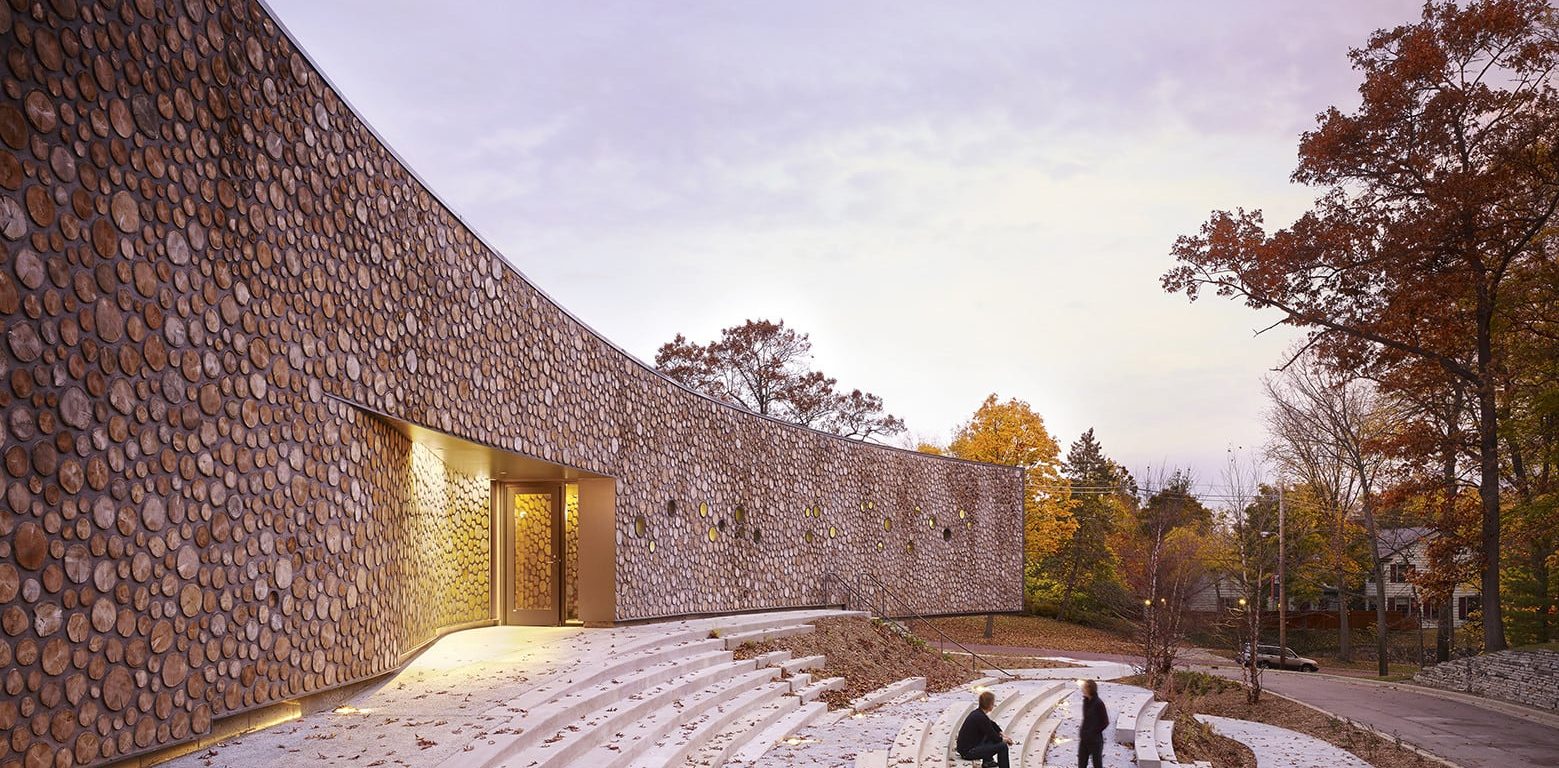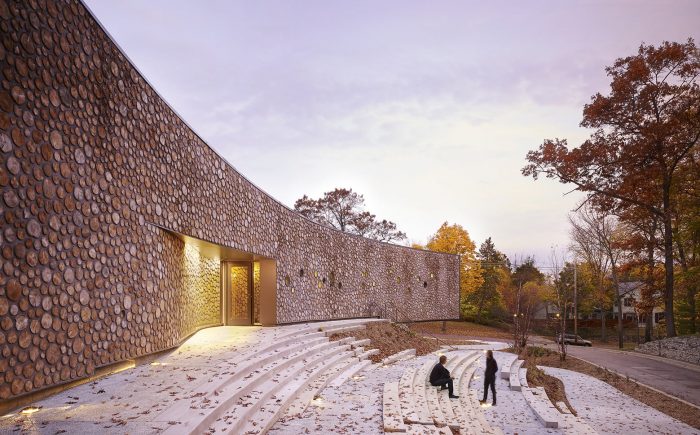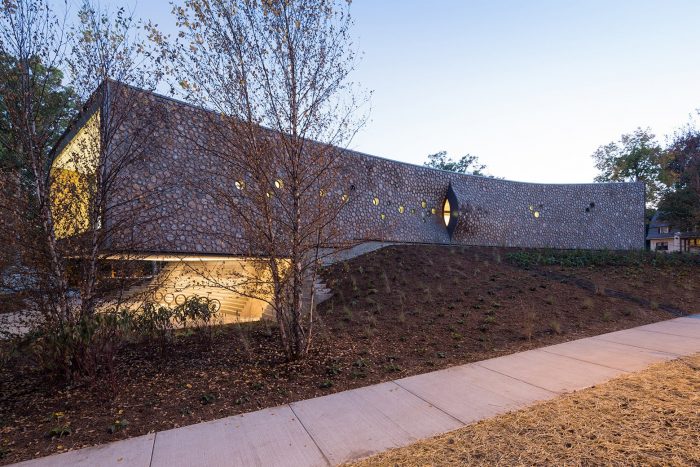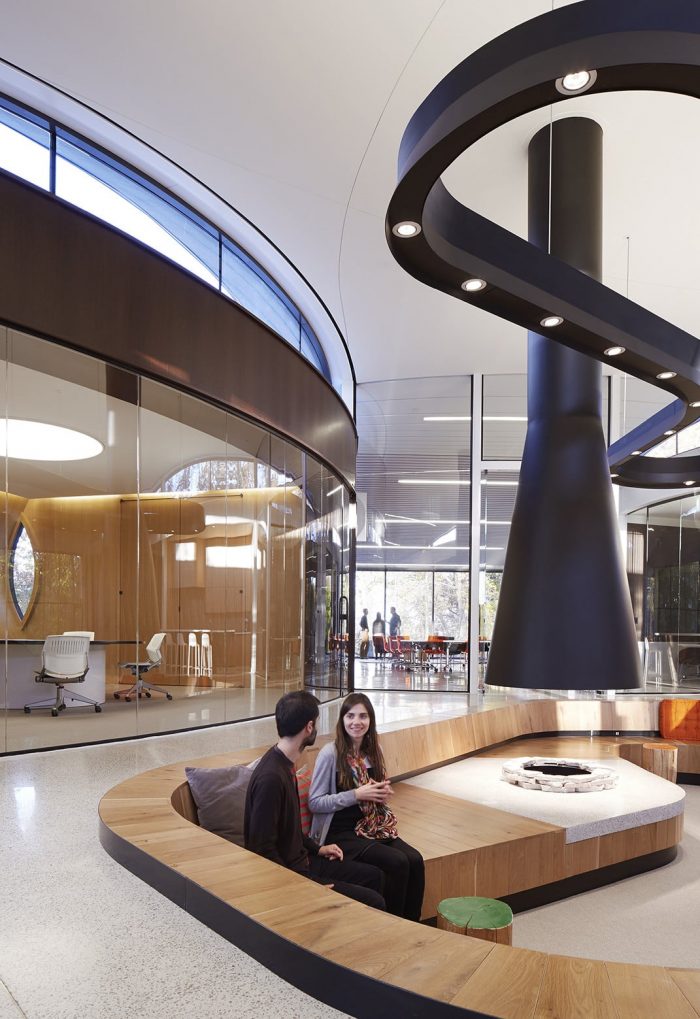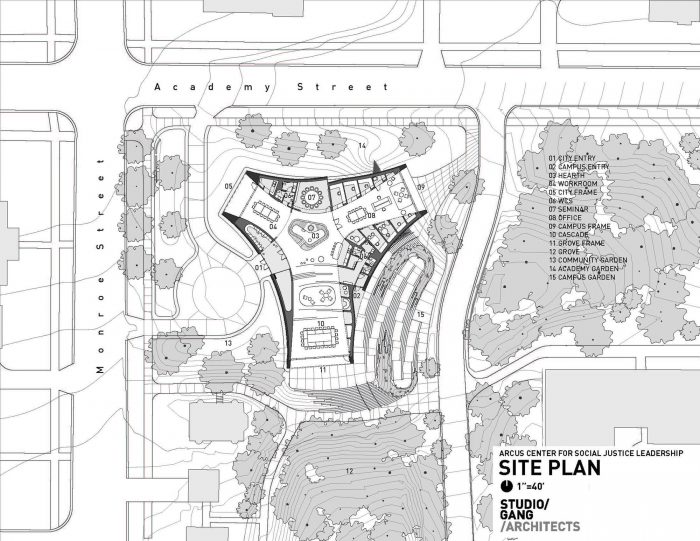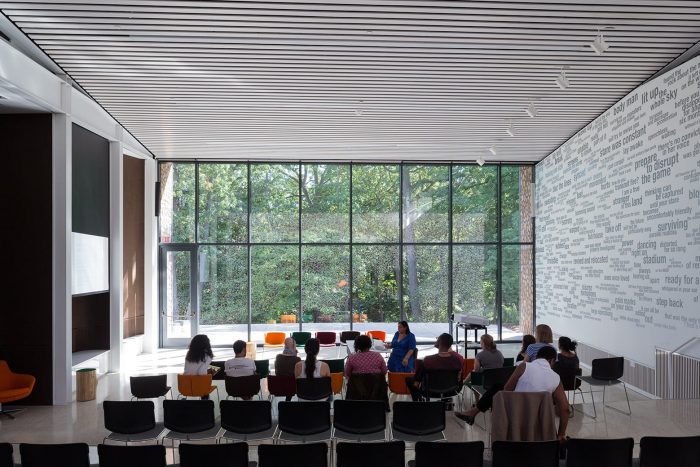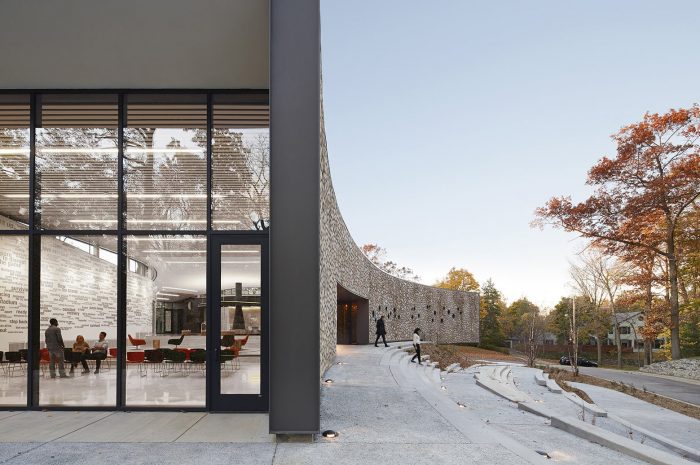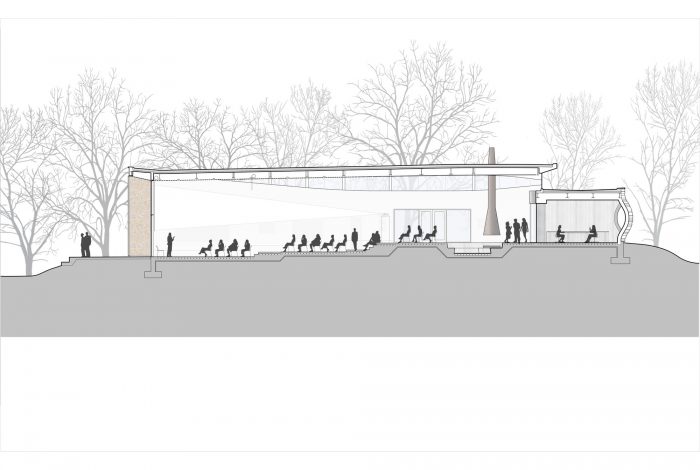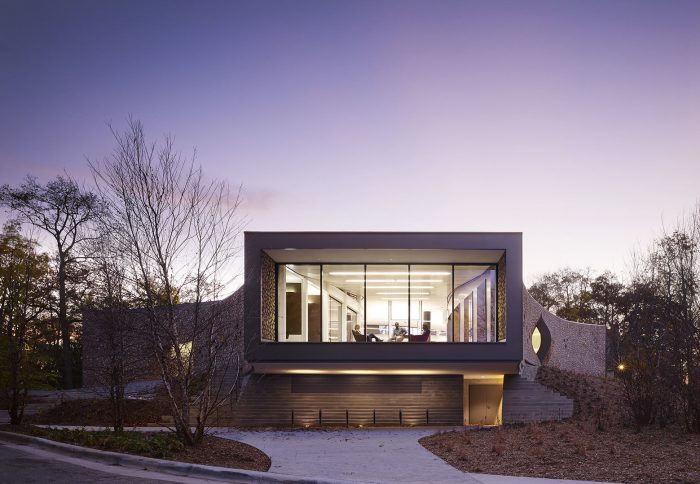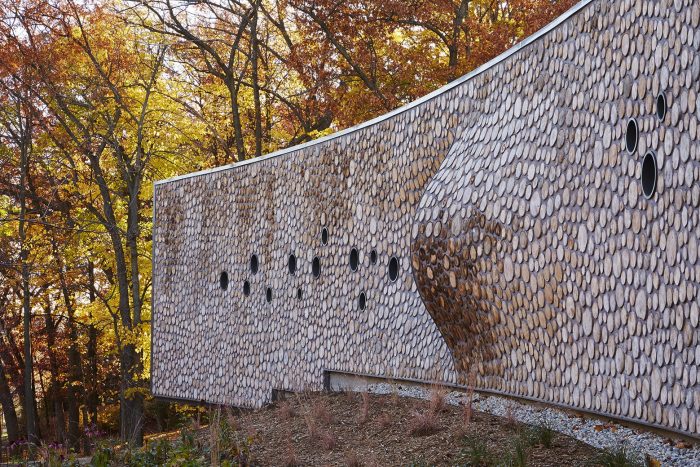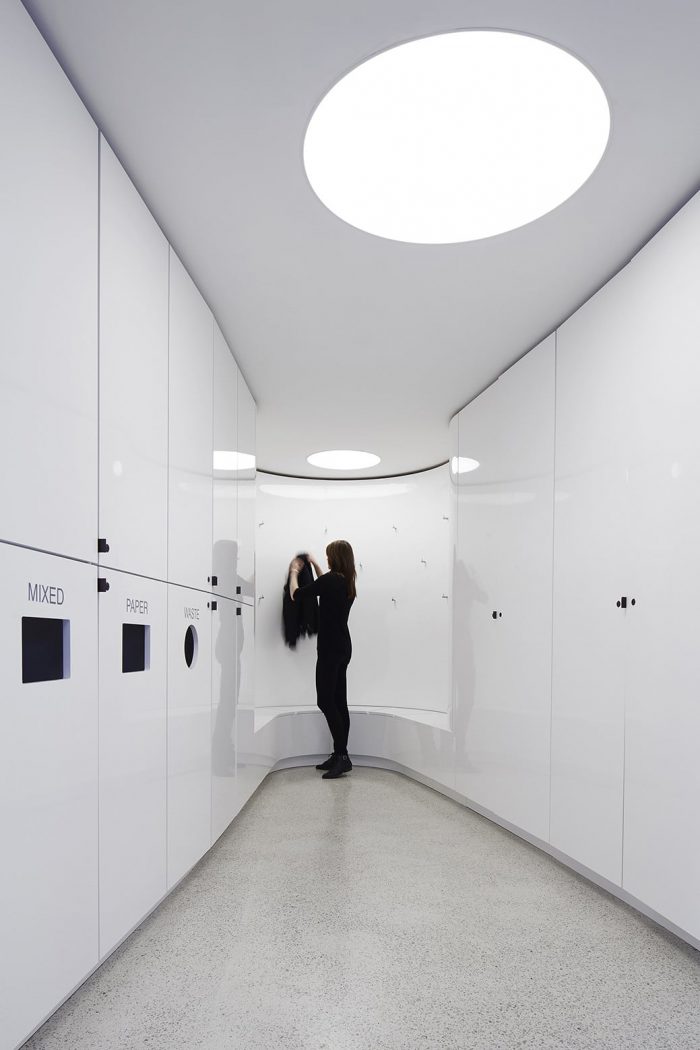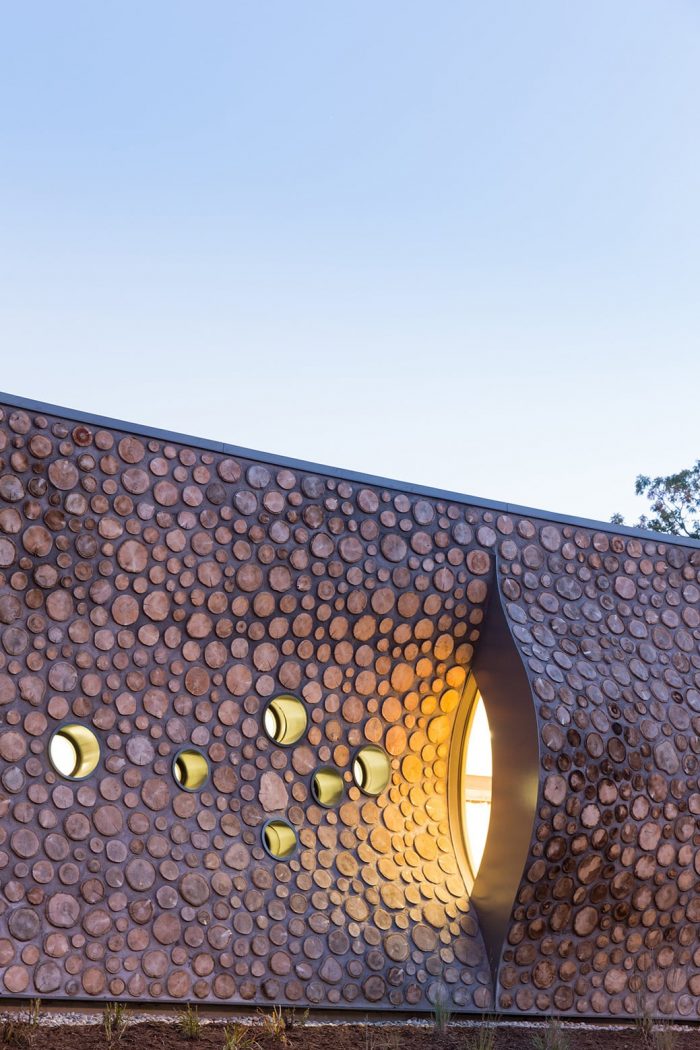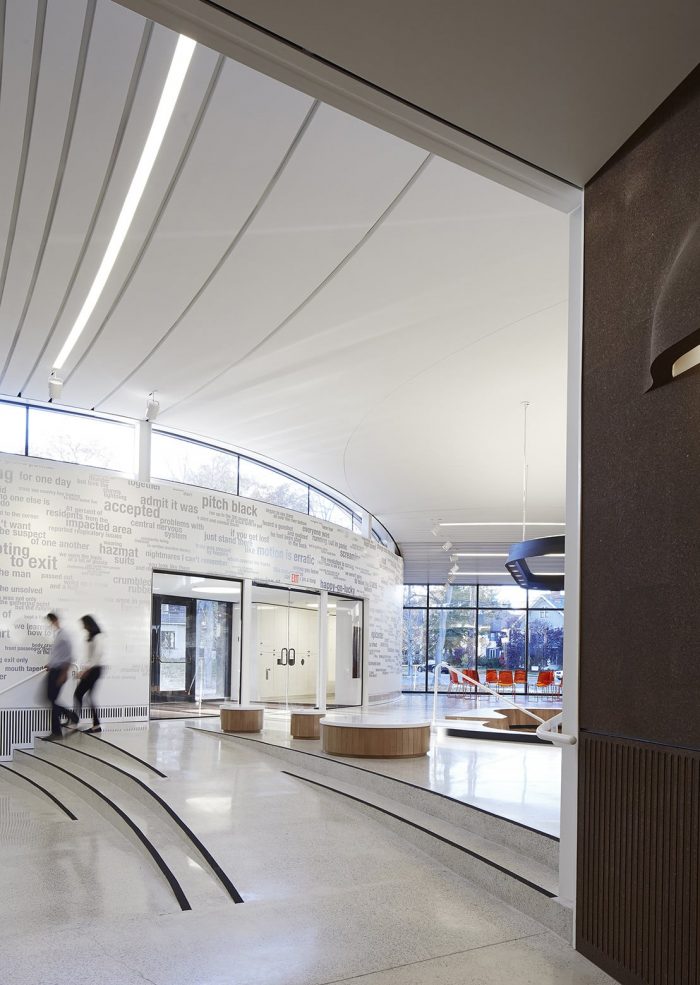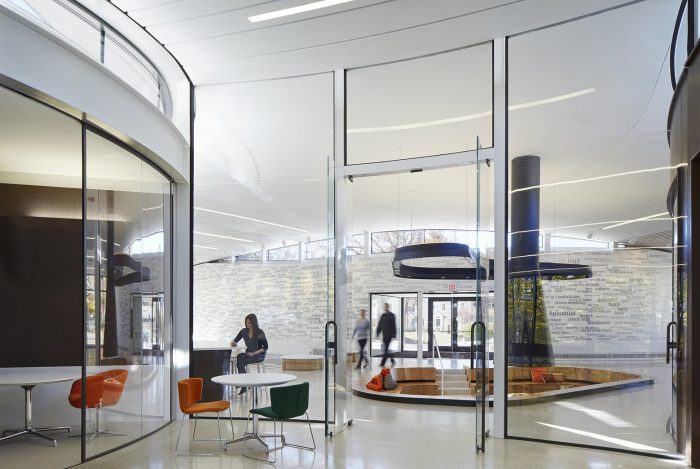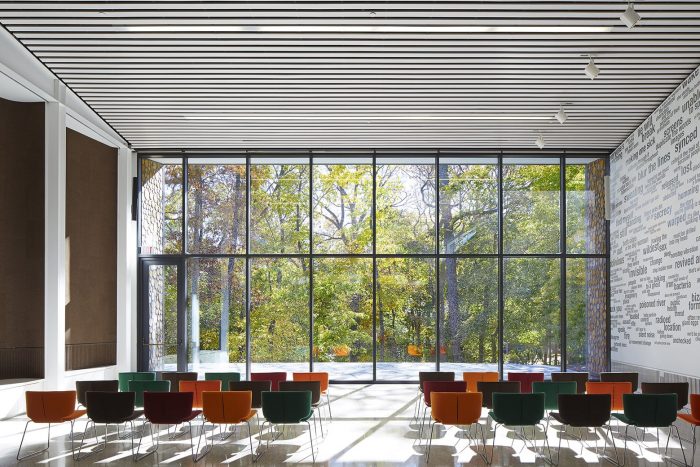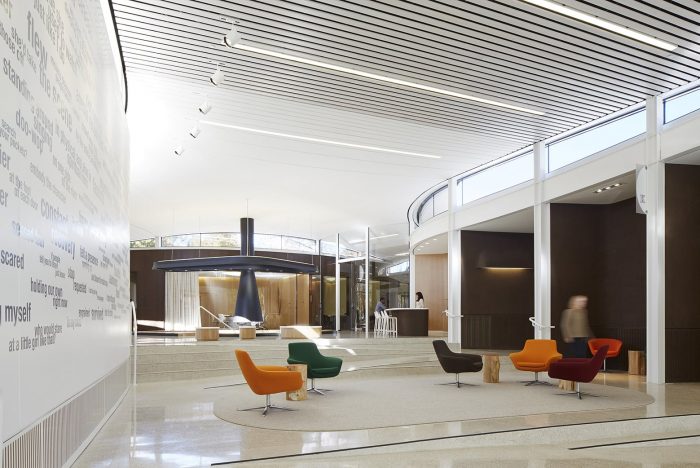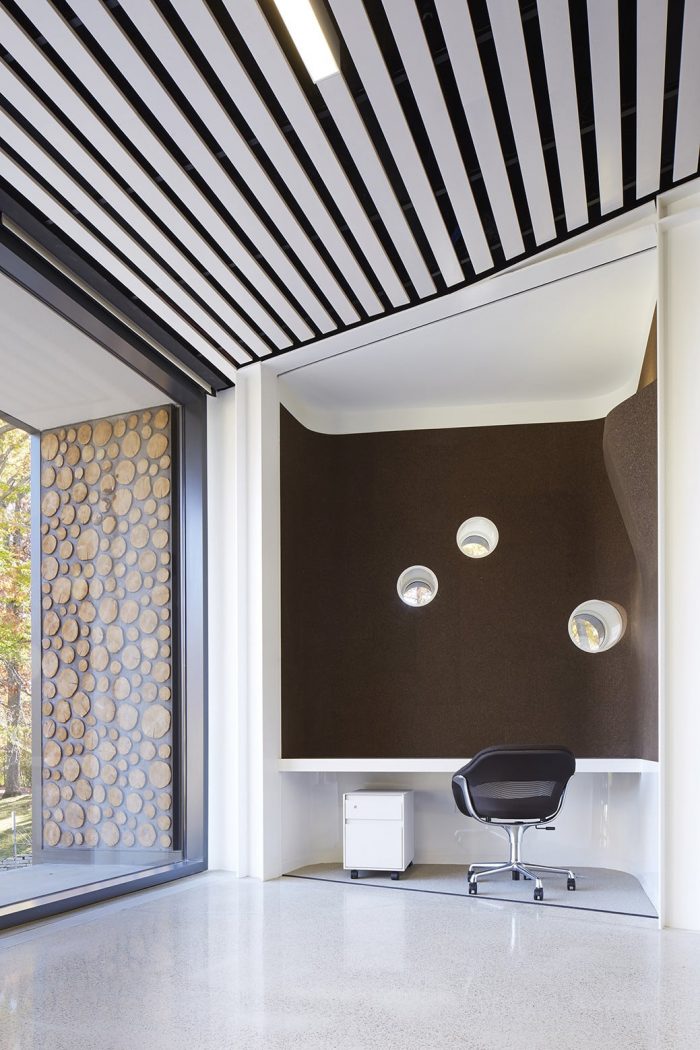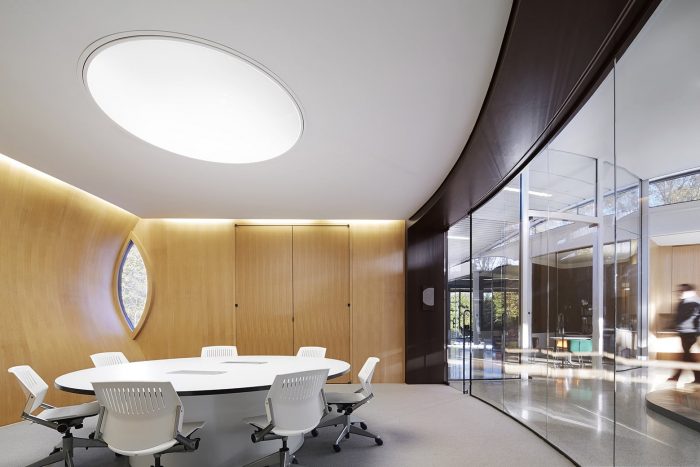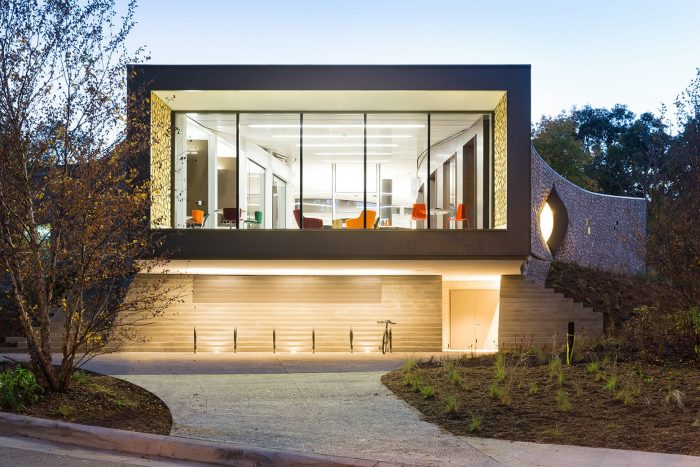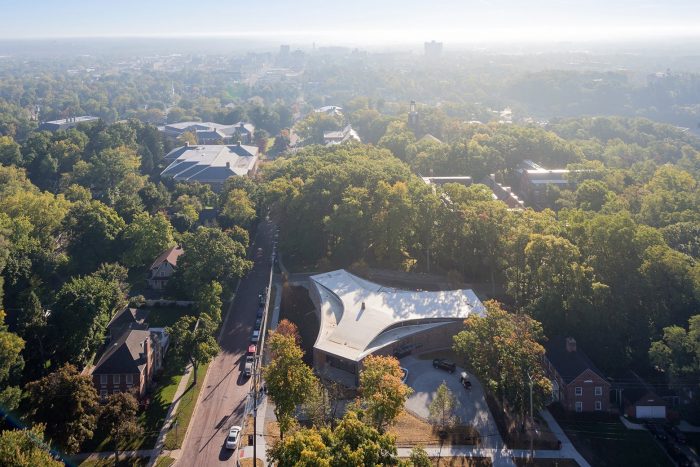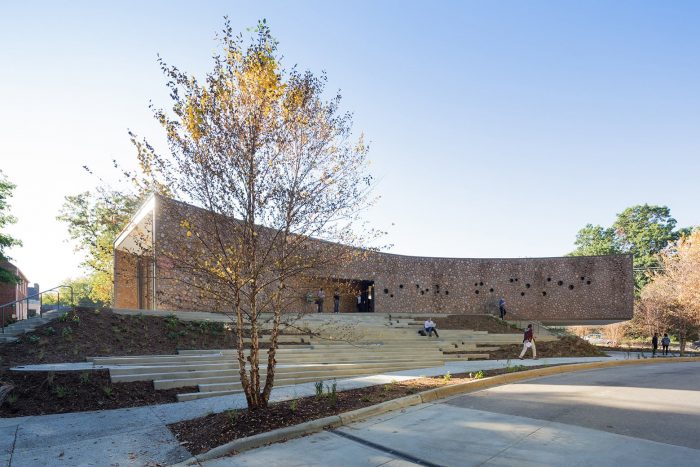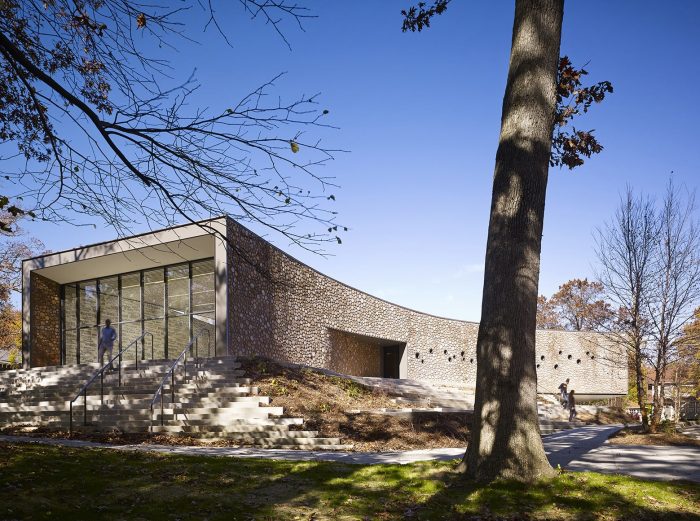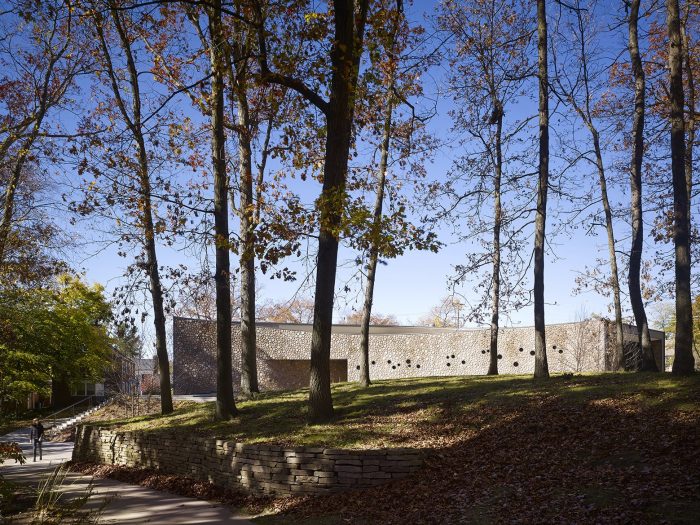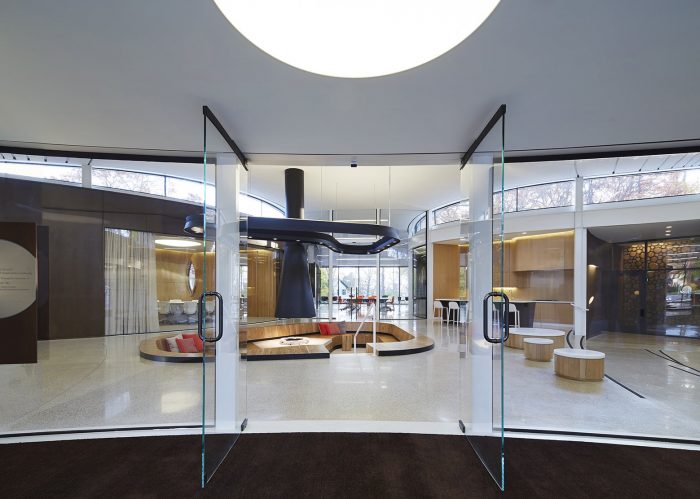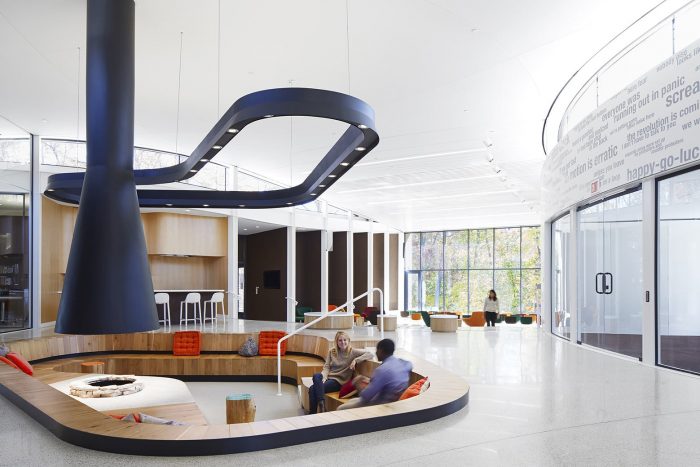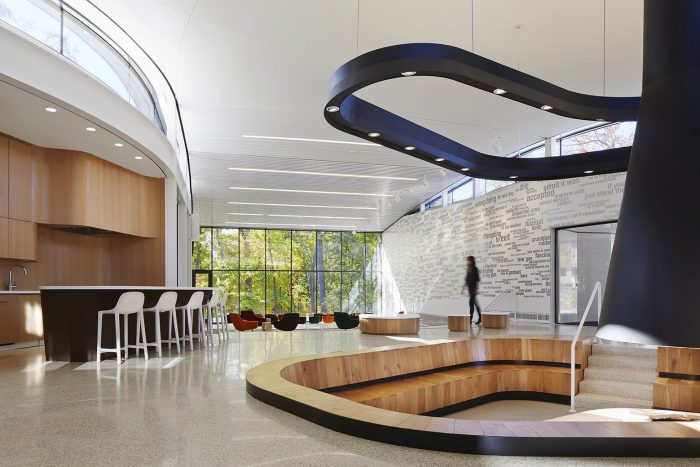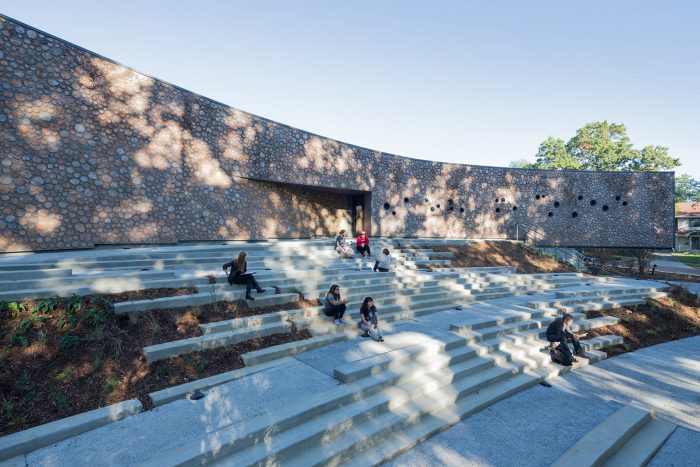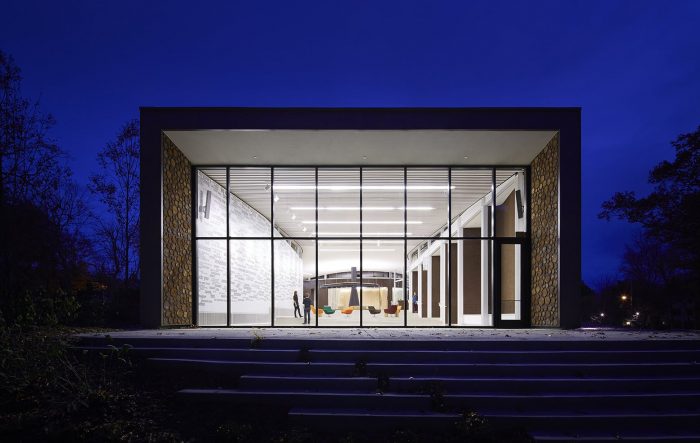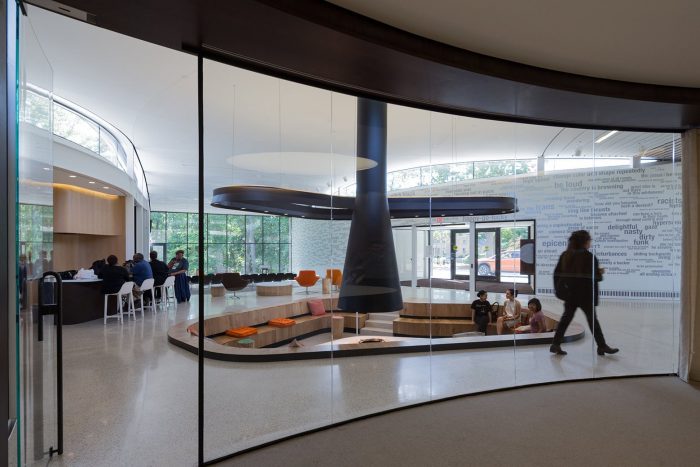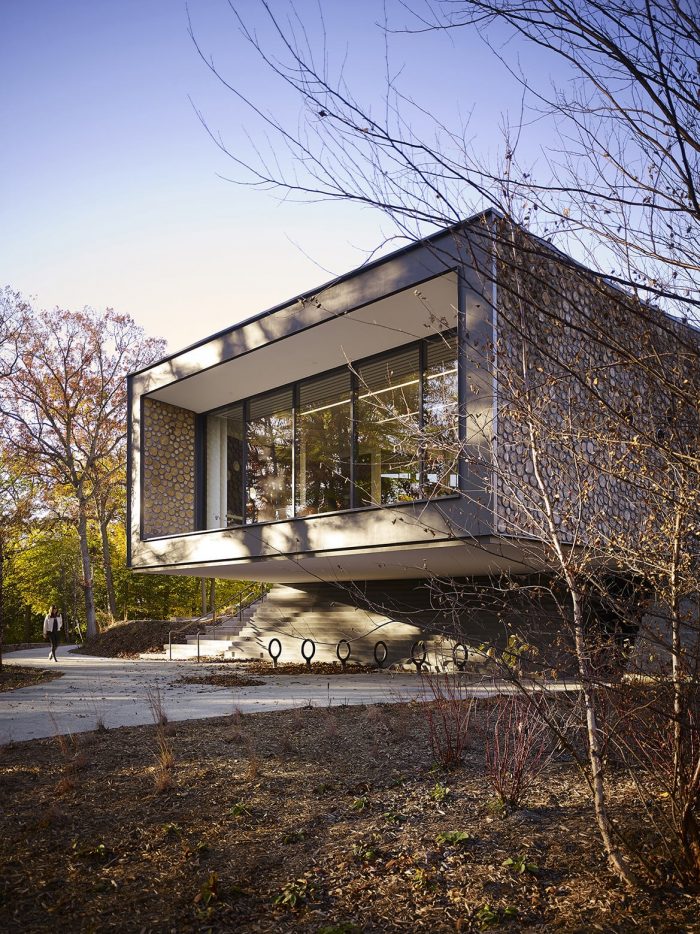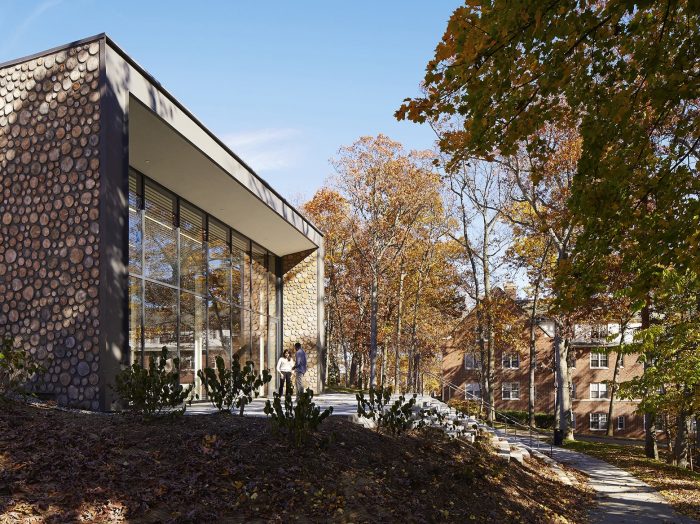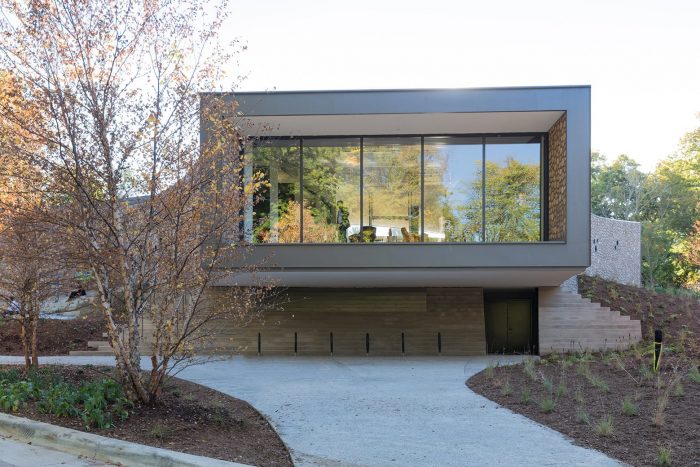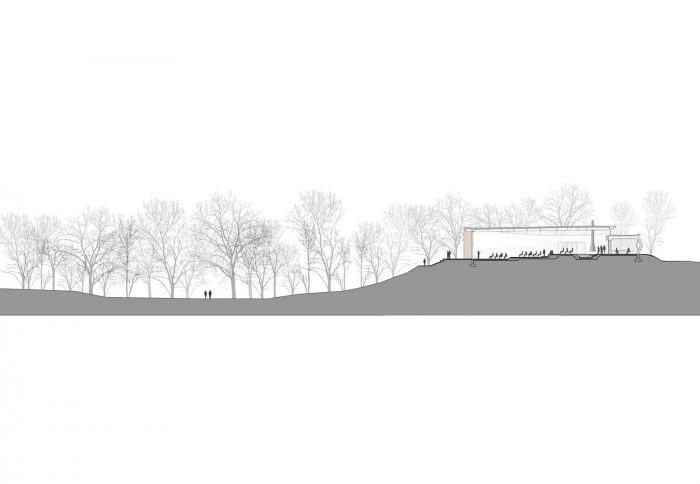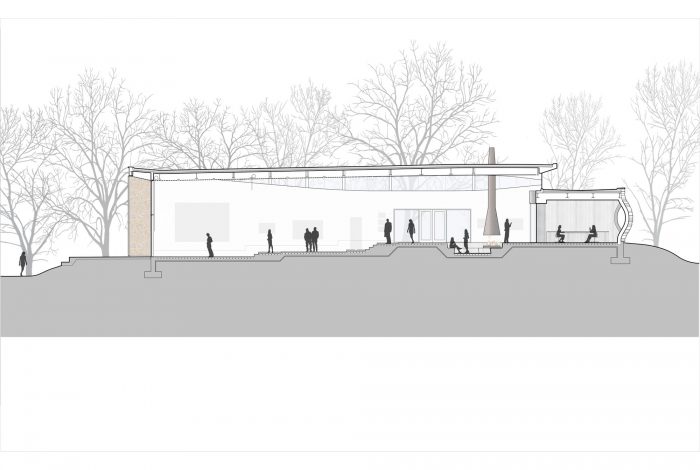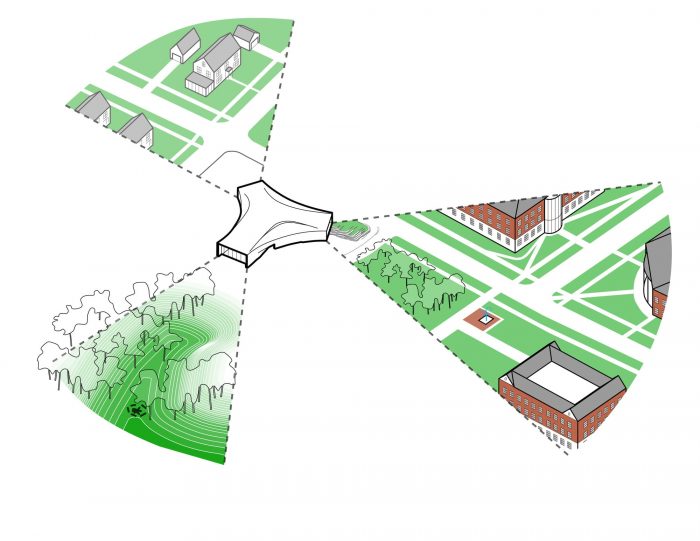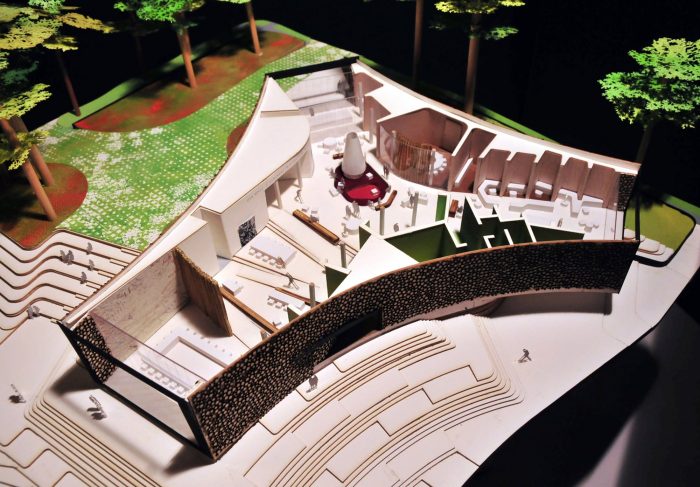从历史上看,为社会正义而召开的会议都是在最非正式的场合进行的,例如,这个国家许多最重要的民权集会都是在教堂的地下室、客厅,甚至是厨房的桌子旁进行的。从头开始设计一栋建筑,以促进讨论并使这项工作变得可见并欢迎所有人,这种挑战在许多方面是前所未有的。阿库斯社会正义领导中心的目标是将社会正义的话题从地下室带出来,正视公众意识。
Historically, convening for social justice has taken place in the most informal settings, with many of this nation’s most important civil rights gatherings, for example, taking place in a church basement, a living room, or even around a kitchen table. The challenge of designing a building from the ground up that fosters discussion and renders this work visible and welcome to all is in many ways unprecedented. The Arcus Center for Social Justice Leadership aims to bring social justice topics up from the basement and squarely into public consciousness.
阿库斯中心以催化积极的社会变革为使命,努力培养新兴的领导人,并让人权和社会正义领域的现有领导人参与其中。作为一个研究中心和会议空间,该建筑将学生、教师、访问学者、社会正义领袖和公众成员聚集在一起,进行对话和活动,旨在创造一个更公正的世界。
With its mission to catalyze positive social change, the Arcus Center works to develop emerging leaders and engage existing leaders in the fields of human rights and social justice. As a study center and meeting space, the building brings together students, faculty, visiting scholars, social justice leaders, and members of the public for conversation and activities aimed at creating a more just world.
该中心的建筑在几个重要方面支持这项工作。在建筑内部,视觉上的开放和日间照明的设计是为了鼓励 “召集 “的配置,开始打破人们之间的心理和文化障碍,帮助促进理解。建筑中心的起居室、炉灶和分享食物的厨房的存在,为频繁的非正式会议和随意或偶然的相遇创造了可能。
The Center’s architecture supports this work in several important ways. Inside, the building’s visually open and day-lit interior is designed to encourage “convening” in configurations that begin to break down psychological and cultural barriers between people and help facilitate understanding. The presence of a living room, hearth, and kitchen for sharing food at the center of the building creates the potential for frequent informal meetings and casual or chance encounters.
该中心的建筑在几个重要方面支持了这项工作。在建筑内部,视觉上的开放和日间照明的设计是为了鼓励 “聚会 “的配置,从而开始打破人们之间的心理和文化障碍,帮助促进理解。建筑中心的起居室、炉灶和分享食物的厨房的存在,为频繁的非正式会议和随意或偶然的相遇创造了可能。
The Center’s architecture supports this work in several important ways. Inside, the building’s visually open and day-lit interior is designed to encourage “convening” in configurations that begin to break down psychological and cultural barriers between people and help facilitate understanding. The presence of a living room, hearth, and kitchen for sharing food at the center of the building creates the potential for frequent informal meetings and casual or chance encounters.
该中心的建筑在几个重要方面支持了这项工作。在建筑内部,视觉上的开放和日间照明的设计是为了鼓励 “聚会 “的配置,从而开始打破人们之间的心理和文化障碍,帮助促进理解。建筑中心的起居室、炉灶和分享食物的厨房的存在,为频繁的非正式会议和随意或偶然的相遇创造了可能。
The Center’s architecture supports this work in several important ways. Inside, the building’s visually open and day-lit interior is designed to encourage “convening” in configurations that begin to break down psychological and cultural barriers between people and help facilitate understanding. The presence of a living room, hearth, and kitchen for sharing food at the center of the building creates the potential for frequent informal meetings and casual or chance encounters.
在一个社会公正的世界里,每个人的生命都是有价值的,他们固有的尊严也是被承认的,Arcus中心表明,召集的空间可以而且应该是我们最强大的一些空间。
Informed by the tenet that in a socially just world each person’s life is valued and their inherent dignity is recognized, the Arcus Center demonstrates that spaces for convening can and should be some of our most powerful.
Architects: Studio Gang
Area : 10000 ft²
Year : 2014
Photographs :Steve Hall for Hedrich Blessing, Iwan Baan
City:KALAMAZOO
Country: UNITED STATES

